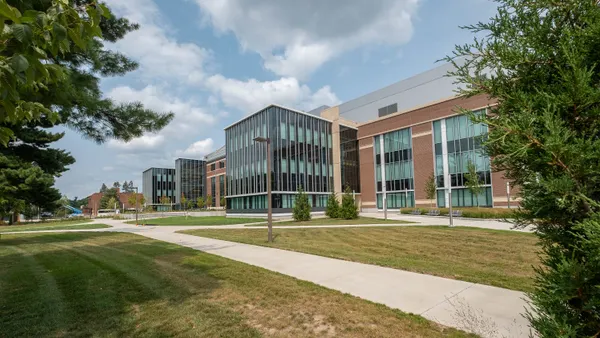Dive Brief:
- In an effort to eliminate the use of wood from illegal logging operations in LEED-certified buildings, and to stymie the illegal logging itself, the U.S. Green Building Council (USGBC) has updated its rating system.
- Builders and developers can now earn a new pilot Alternative Compliance Path (ACP) credit by verifying that the wood they’ve used is legal and certified by organizations like the Sustainable Forestry Initiative (SFI) Program. The Environmental Leader reported that the USGBC may use the new credit as a model for other materials as well.
- The USGBC said that previously, LEED projects were awarded credit for only a percentage of wood used in a project, not the total, which made it possible for a building to earn the LEED wood credit, even though illegal wood might have been used in its construction.
Dive Insight:
The new ACP will apply to all LEED 2009 rating systems and LEED v4 rating systems, which will be the default system after Oct. 31, according to the USGBC.
"We applaud leaders from the U.S. Green Building Council as this change across all LEED rating tools takes a stance against illegal wood and reinforces the value of certified and responsibly sourced forest products," Kathy Abusow, president and CEO of SFI Inc., said in a statement.
LEED certification is widely recognized as the global standard in green building, with nearly 75,000 commercial project participants worldwide. Last year, ahead of the COP21 climate conference in Paris, the USGBC announced its commitment to scaling green buildings to more than 5 billion square feet over the next five years. Additionally, the USGBC made a commitment, along with 25 other international Green Building Councils, to support building sustainability, reduce greenhouse gas emissions and to limit global warming to two degrees — as buildings account for one-third of global emissions, according to the USGBC.
The building industry has been undergoing a "green metamorphosis" and is increasingly embracing green building and sustainability. In fact, Dodge Data & Analytics' World Green Building Trends 2016 report found that green building is doubling every three years. Additionally, The Urban Land Institute’s Greenprint Center for Building Performance’s sixth annual Greenprint Performance Report found that real estate property management firms are significantly reducing energy use, water consumption and greenhouse gas emissions in the properties they own and manage.













